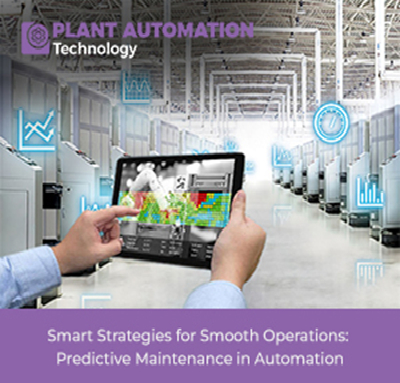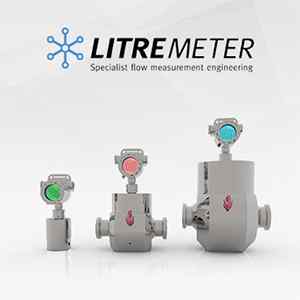Smart Strategies for Smooth Operations: Predictive Maintenance in Automation

Introduction:
In the domain of industrial automation, where the efficiency of production relies heavily on machinery and equipment, maintaining their peak performance while reducing operational interruptions is of paramount importance. An emerging method that has garnered substantial attention is Predictive Maintenance in Automation. This modern approach harnesses cutting-edge technologies to predict potential equipment failures, allowing for preemptive measures to be taken before they lead to unanticipated halts in production or expensive maintenance efforts.
Predictive Maintenance is a departure from traditional maintenance practices that often involve either reactive approaches (fixing something after it breaks) or scheduled maintenance (replacing or servicing components at fixed intervals). These methods can be inefficient and expensive. Predictive Maintenance, on the other hand, relies on data-driven insights and machine learning algorithms to predict when equipment failure is imminent based on real-time data, usage patterns, and other relevant factors.
Automation, in the context of manufacturing and industrial processes, involves the use of control systems such as computers or robots to operate and manage machinery and processes. Automated systems can greatly enhance efficiency and precision, but when a component within an automated system fails unexpectedly, it can disrupt entire production lines and lead to significant financial losses.
Predictive Maintenance in Automation brings together the power of automation and data analysis. Here's how it works:
I) Data Collection for Predictive Maintenance in Automation
Data collection is the foundational step in implementing a successful predictive maintenance strategy in automation. It involves gathering relevant information from machinery and equipment to monitor their performance, identify anomalies, and predict potential failures. This data serves as the basis for the advanced analytics and machine learning algorithms that drive predictive maintenance systems.
In the context of Predictive Maintenance in Automation, data collection is a dynamic and continuous process that involves the following key elements:
1. Sensor Deployment: Sensors and Internet of Things (IoT) devices are strategically installed on various components of machinery and equipment. These sensors capture a range of parameters such as temperature, vibration, pressure, humidity, electrical currents, and more. The type and number of sensors used depend on the specific equipment and the data needed for accurate analysis.
2. Real-time Monitoring: Sensors collect data in real time, providing a constant stream of information about the operational state of the equipment. This real-time monitoring allows for immediate detection of deviations from normal operating conditions.
3. Data Variety: The data collected includes both structured and unstructured information. Structured data includes numerical readings from sensors, while unstructured data might include images, audio, or text-based logs. This diverse data pool enhances the accuracy of predictive models.
4. Historical Data: Alongside real-time data, historical data plays a crucial role. Past performance and failure patterns are used as a reference to identify anomalies and predict future failures. This historical context provides valuable insights into how equipment behaves over time.
5. Data Preprocessing: Before analysis, the collected data often undergoes preprocessing. This includes tasks like data cleaning, normalization, and transformation to ensure consistency and compatibility with analytical models.
6. Edge Computing: In scenarios where real-time analysis is critical, edge computing is employed. This involves processing data locally at the source (machinery or equipment) rather than sending it to a central server. Edge computing reduces latency and allows for faster decision-making.
7. Data Security: Given the sensitive nature of operational data, ensuring its security and privacy is paramount. Encryption, access controls, and secure communication protocols are implemented to protect the collected data.
8. Scalability: As industrial operations grow, data collection systems must be scalable to accommodate a larger number of sensors and increased data volume. Cloud-based solutions are often used for scalability and centralized data storage.
9. Integration with Automation Systems: Data collection systems are integrated with existing automation control systems. This integration enables seamless data flow between sensors, control systems, and predictive analytics platforms.
II) Data Analysis for Predictive Maintenance in Automation
Data analysis is the core of the Predictive Maintenance in Automation strategy, where collected data is transformed into actionable insights using advanced analytics techniques. By analyzing real-time and historical data, organizations can identify patterns, anomalies, and trends that help predict equipment failures and proactively schedule maintenance. This process involves leveraging various analytical methods and machine learning algorithms to make informed decisions and optimize maintenance practices.
Here's a breakdown of the key aspects of data analysis in the context of predictive maintenance:
1. Feature Extraction: Raw data collected from sensors often contain a wealth of information. Feature extraction involves identifying relevant attributes or features from this data that can be used as inputs for predictive models. These features could include parameters like temperature fluctuations, vibration intensity, pressure changes, and more.
2. Anomaly Detection: Anomalies are deviations from normal patterns of behavior. Data analysis techniques are used to detect anomalies in real-time sensor data. Anomalies could indicate potential equipment malfunctions, wear and tear, or degradation.
3. Pattern Recognition: By analyzing historical data, patterns related to equipment failures or performance decline can be identified. Machine learning algorithms can recognize these patterns and use them to make predictions about the future behavior of the machinery.
4. Predictive Modeling: Machine learning algorithms play a crucial role in predictive maintenance. They are trained on historical data to learn the relationship between various parameters and failure events. Once trained, these models can predict when equipment is likely to fail based on real-time sensor readings.
5. Classification and Regression: Predictive maintenance often involves classification tasks (e.g., determining whether a component will fail within a certain time frame) and regression tasks (e.g., estimating the remaining useful life of a component). Machine learning algorithms are employed to perform these tasks accurately.
6. Health Index Calculation: A health index is a numerical representation of the overall condition of equipment. It is calculated based on the analyzed data and provides a clear understanding of the equipment's health status. Sudden drops in the health index could indicate imminent failure.
7. Threshold Setting: Predictive maintenance systems establish thresholds for different parameters. If a sensor reading crosses a predefined threshold, it triggers an alert or notification to maintenance personnel. These thresholds are determined through analysis of historical data and equipment specifications.
8. Continuous Learning: Predictive models are not static; they continue to learn and adapt as new data is collected. This ongoing learning process ensures that the models remain accurate and up-to-date as equipment behavior evolves over time.
9. Data Visualization: The outcomes of data analysis are frequently presented through dashboards and graphs. These visualization tools simplify the interpretation of intricate data, enabling maintenance teams to swiftly make well-informed decisions.
10. Integration with Maintenance Workflow: The insights derived from data analysis are integrated into the organization's maintenance workflow. Maintenance teams receive notifications, alerts, and recommendations to plan and execute maintenance activities effectively.
III) Predictive Analytics in Predictive Maintenance for Automation
Predictive analytics constitutes a fundamental element of the Predictive Maintenance in Automation strategy, employing sophisticated data analysis methods and machine learning algorithms to predict potential equipment breakdowns. This proactive methodology empowers enterprises to make knowledgeable determinations regarding maintenance schedules, curtail downtime, and enhance the allocation of resources. Within the sphere of industrial automation, predictive analytics assumes a crucial role in guaranteeing the seamless functioning of machinery and operational processes.
Here's a deeper look into the role of predictive analytics in predictive maintenance for automation:
1. Data Preparation: Predictive analytics starts with collecting and preparing data. This involves gathering real-time sensor data, historical records, and other relevant information. Data preprocessing ensures that the data is clean, consistent, and suitable for analysis.
2. Feature Engineering: Relevant features or attributes are extracted from the collected data. These features provide the necessary input for predictive models. Feature engineering might involve selecting the right parameters, transforming data, and creating new features that enhance the model's accuracy.
3. Selecting Models: Predictive maintenance utilizes diverse machine learning algorithms, including decision trees, random forests, support vector machines, and neural networks. The model chosen is contingent on the intricacy of the problem and the inherent qualities of the data.
4. Training and Evaluation: The chosen predictive model undergoes training using historical data encompassing regular operational states as well as instances of equipment malfunction. Through this process, the model comprehends the patterns and correlations within the data that signal potential failures.
5. Anomaly Detection: One of the primary goals of predictive analytics is to detect anomalies or deviations from normal behavior. When sensor readings or operational parameters fall outside expected ranges, the model can flag these instances as potential anomalies that require attention.
6. Failure Prediction: Predictive models use the learned patterns to predict when a component is likely to fail. This prediction is often accompanied by a probability score indicating the confidence level of the prediction.
7. Thresholds and Alerts: To trigger timely actions, thresholds are set based on the model's predictions. If the model predicts a failure probability above a certain threshold, an alert is generated to notify maintenance personnel.
8. Estimating Remaining Useful Life (RUL): Predictive analytics has the capability to gauge the remaining useful life of a component. This aids maintenance teams in strategically preparing for replacements or repairs ahead of time, thereby reducing instances of unforeseen downtime.
9. Continuous Learning: Predictive models continue to learn and adapt as new data becomes available. This ensures that the models remain accurate even as equipment behavior evolves over time.
10. Integration with Maintenance Workflow: Predictive analytics results are integrated into the organization's maintenance workflow. Maintenance teams receive insights, alerts, and recommendations through the organization's communication channels.
Benefits of Predictive Maintenance in Automation
The benefits of Predictive Maintenance in Automation are manifold:
• Reduced Downtime: By identifying issues before they cause complete breakdowns, downtime is minimized, leading to increased productivity and reduced losses.
• Cost Savings: Predictive Maintenance optimizes maintenance schedules, preventing unnecessary replacements and repairs.
• Extended Equipment Lifespan: Proactive care can extend the life of equipment, postponing the need for expensive replacements.
• Safety: Guarantees the equipment's adherence to safe operational conditions, mitigating the potential for accidents stemming from malfunctioning machinery.
Conclusion:
In summary, Predictive Maintenance in Automation stands as a revolutionary force for industries dependent on automation. Through the fusion of data analysis and machine learning, this methodology shifts maintenance from a costly and reactive obligation to a proactive and strategic edge, ultimately fostering heightened efficiency, financial gains, and elevated productivity.






